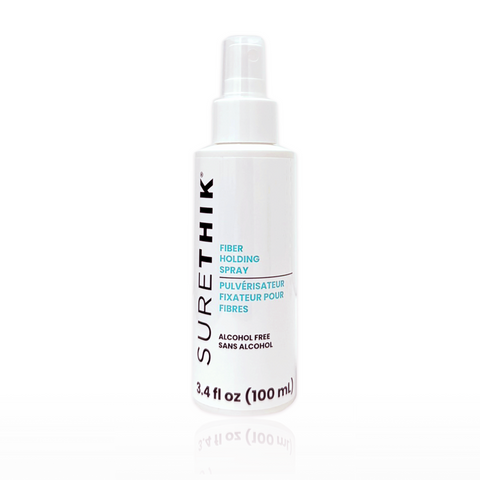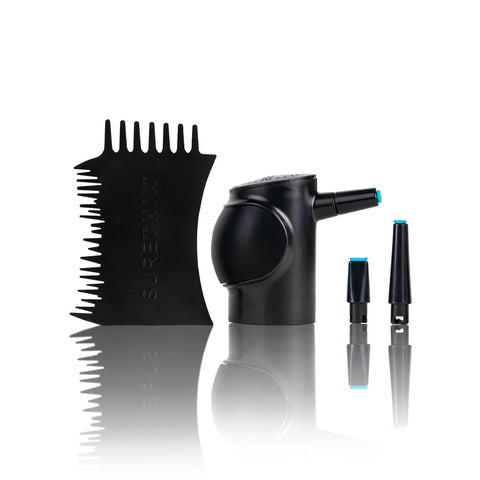
What is Hair Porosity?
It's one of the most perplexing natural hair ideas but knowing the different hair porosity types—low porosity and high porosity—can completely change how your hair behaves and responds to other natural hair treatments. If you have porous hair, it has a lot to do with why your hair gets dry, soaks up your curl cream, or is easily weighed down by a hair moisturizer. While it's natural to think that hair porosity is proportional to curl type, this isn't always the case. Take a hair porosity test before your next wash day to see how you might alter your regimen based on how porous your hair is.
WHAT IS HAIR POROSITY?
The ability of your hair to absorb and keep moisture is measured by porosity. It tells you how readily water can get into your hair. The structure of your cuticle, or the outside layer of hair, decides porosity. Low porosity hair has a firmly bonded cuticle layer, making it challenging for moisture to permeate (but also difficult to escape once it's in your hair). On the other hand, high porosity hair has gaps and pores in the cuticle that enable moisture to readily move in and out. Porosity is dictated by heredity, but extrinsic influences like heat and chemical processing can change it.

DIY POROSITY TEST:
The openness or closeness of the shingle-like cuticles decides the hair porosity type. It's vital to remember that your hair's porosity might alter for the better or for the worst. There are several ways you can help decide your hair porosity.
The Spray Bottle Test: Using a spray bottle, spritz a tiny part of your hair. If the water beads up on your hair, it's a sign of low porosity. Your hair has a high porosity if it absorbs rapidly. You have average porosity hair if the water sits on your hair for a few minutes before soaking into it.
Scalp test: Take a strand of hair and move it up toward your scalp with your fingertips. You have high porosity if you experience tiny bumps along the route. If the shaft is flat, your cuticle is well bonded, and your hair has low porosity.
Float Test: The most common way of testing your hair. Take a few hair strands from your brush or comb (make sure your hair is clean!). Hair products might affect the outcome), and then place them in a basin of water. Allow them to sit for a few moments. You have poor porosity if your hair floats when the time is up. You have high porosity if it sinks. (If your porosity is medium, it may float in the middle of the bowl.)
3 LEVELS OF HAIR POROSITY:
You can examine the porosity of your hair at home in a straightforward method. All you need is a glass of water (preferably clear) and a strand of hair. Try this after washing the product and removing any build-up from your strands to get the most correct reading. First, comb your hair to release shedding strands, then take those stands and drop them into your glass of water. Coat with a low porosity float. Hair with a 'normal' porosity will float for a while before gradually sinking. Hair with high porosity will fall right away. We will break down the three levels of density to help you decide your level!

LOW POROSITY:
The cuticle thickness of hair with low porosity is firmly linked, with overlapping scales that lay flat. This type of hair is often healthy and glossy, especially when it is dark in colour. However, when you try to moisten low porosity hair, it repels moisture and is difficult to treat since chemicals do not penetrate it.
Protein-rich deep conditioning treatments can also cause build-up in low porosity hair, leaving it rigid and straw-like. Stick to daily conditioners that are protein-free and have humectants like glycerin or honey. To aid loosen up the firmly bonded cuticle, use moderate heat with protein-free deep conditioning treatments.
Low porosity hair needs emollient-rich moisturizers like shea butter, jojoba oil, coconut oil, and mineral oil. Humectant products, which attract and keep moisture to your hair, are also beneficial. Hair milk is a lightweight, liquid-based treatment that won't sit on your hair and make it oily or greasy.
HOW TO CARE FOR LOW POROSITY HAIR:
What does hair with low porosity look like? Just as there isn't a single hair type with less porous hair, you can't anticipate low porosity hair to have a certain appearance. You may notice that hair with poor porosity appears weighted down. This is due to the fact that when products are applied to low porosity hair, they just sit on top of the strands.
What can you do now to address your hair porosity? Is coconut oil suitable for hair with low porosity? No, not exactly. You should avoid oils like coconut and castor oil, as well as other items designed to seal the cuticle, because they will work against your attempts to get moisture inside. Highly acidic products, like as an apple cider vinegar rinse, should also be avoided if you have low porosity hair. They're also not good for hair with low porosity because they're typically utilized to maintain the cuticle tight.
MEDIUM POROSITY:
Medium porosity hair usually takes the least amount of upkeep. The cuticle layer is looser, enabling just enough moisture to enter while limiting excessive moisture loss. Normal porosity hair holds styles well and maybe permed and colored with consistent results. These procedures, on the other hand, might damage your hair and increase its porosity over time.
The following are some of the most notable characteristics of this porosity level:
- Moisture is quickly absorbed by the hair.
- It does not need as much moisturizing.
- Hair is easily dyed and chemically treated.
Keep doing what you're doing to keep your mane in good shape. However, don't overdo it with the protein since it might cause your hair to get stiff. Also, be careful with heat and chemicals since they can change the cuticles of your hair and lead you to have a high porosity level.
HOW TO CARE FOR MEDIUM POROSITY HAIR:
Ideally, your strands should be balanced with a medium porosity. This implies that your hair can not only absorb moisture, but also retain it for a longer period of time. It's also ideal for keeping other normal porosity hair care products in longer, so leave-in conditioners, heat protectants, and other hair moisturizers that help keep hair healthy may absorb easily and stay in place to do their function. Make use of a conditioner that is neither too light nor too heavy.
It takes some work to keep your hair at an appropriate medium porosity. Excessive use of chemical procedures or heat styling should be avoided. These are techniques that, over time, can reduce the porosity of your hair.
HIGH POROSITY:
Hair can have a high porosity either naturally or due to chemical processing, harsh treatment, or environmental damage. In humid conditions, tall porosity hair has gaps and holes in the cuticle, allowing too much moisture to enter your hair and causing frizz and tangling. In addition, due to the sheer quantity of humidity that very porous hair may absorb, even basic activities like bathing, swimming, and washing can cause further damage and breakage.
It's crucial to apply leave-in conditioners, moisturizers, and sealers on porous hair since it can quickly lose moisture. By layering these products, your hair will be able to keep more of the hydration you're providing it. You may also use a thick hair butter to help fill up the holes in your damaged cuticles and prevent your hair from losing too much moisture. Hair with a high porosity level has the following characteristics:
- Strands have a bumpy feel.
- Dullness
- Hair tangles all the time
- Frizz
For anyone with high porosity hair. It is important to make you look for products that will help. That will help balance back your hair. SureThik this lightweight product moisturizes, nourishes, and strengthens your hair with quality, nutrient-rich ingredients. Aloe, Argan, Moringa, Jojoba, and Sweet Almond oils, as well as Panthenol, Zinc, Nettle, and a range of natural extracts, strengthen, add volume, and shine, and make hair feel silky and luscious without weighing it down.
HOW TO CARE FOR HIGH POROSITY HAIR:
While having very porous hair has advantages and disadvantages, it frequently indicates that your hair is damaged. Coloring, excessive heat, and some product components may have damaged the cuticle, causing it to no longer lie down or seal properly. The good news is that hair absorbs moisture and product quickly, but it isn't always able to retain it in.
On the plus side, it's far easier to seal an open cuticle than it is to open a closed one. A mid-weight cleanser is included in high porosity hair products. Richer oils, like as castor oil, or the Monoi Repairing Conditioner, can all assist to seal the cuticle. However, it's crucial to remember that in rare situations, irreversible damage to a cuticle may occur, which even a deep moisturizing treatment or oil can't repair. Other alternatives, like as more acidic products and protein-based porosity hair care treatments, can also aid in the healing and sealing of a damaged cuticle.






